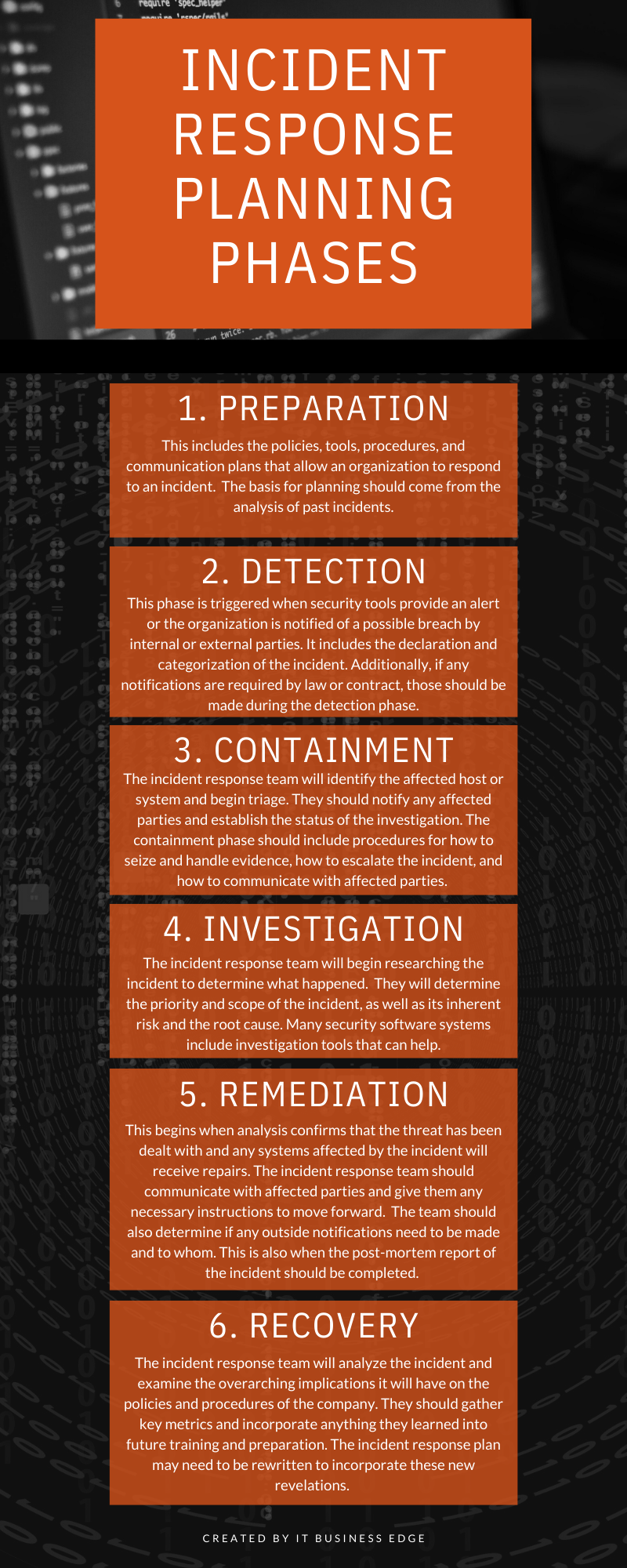Incident response plans are an important part of any security team’s repertoire, but figuring out where to start can be difficult. Unfortunately, it’s not a matter of if an incident happens but when. A study at the University of Maryland found that a hacker attack takes place every 39 seconds. Not all of these are aimed at businesses, but a business breach leads to larger repercussions than a personal one. To make securing your business easier, we’ve put together a downloadable incident response plan template, so you can put together your plan and prepare your business for the inevitable.
Table of contents
- Incident response vs. disaster recovery
- The phases of incident response planning
- Who to involve in incident response planning
- Where to keep your incident response plan
- Download your free incident response plan template
Incident response vs. disaster recovery
While the two occasionally do overlap, there are some fundamental differences between incident response and disaster recovery. Primarily, their main objectives are different. Incident response is meant to protect any sensitive data on a network from a breach, while disaster recovery is used to keep the business functional during a power outage or similar natural disaster.
The preparation phase of incident response relies heavily on security and ensuring that if a threat does get into the network, it can be found and contained quickly. On the other hand, disaster recovery preparation hinges on ensuring operations will continue if there’s a disaster at the location of the server or preventing employees from getting into the office. Because of these differences, you need to have a plan for each documented separately.
The phases of incident response planning
Also read: How to Create an Incident Response Plan
Who to involve in incident response planning
Your incident response plan will likely involve several departments in your organization, so you need to make sure they are all represented in the preparation phase. Your IT security team will probably take the lead on incident response, but you’ll also need to get support from senior management, so other employees will buy into the process. Legal counsel can be helpful to tell you who you need to notify in case of an incident. You’ll also need to determine who the key stakeholders are and keep them in the loop as well. Each business is unique, so it’ll be up to you to decide who to involve in incident response planning.
Where to keep your incident response plan
Keep your incident response plan somewhere that’s easy to access and offline. If there’s already been a breach and the systems have been taken offline, everyone on the incident response team needs to have a copy and be able to access it without connecting to the internet. While you can keep a copy on your computer, you might even want to consider printing it out and keeping it in a folder in your desk or filing cabinet.
Download your free incident response plan template
For help with your incident response plan, download this free template! For the best results, you should update this plan at least once a year or after an incident occurs. Careful planning and preparation is the best way to ensure that your company can prevent breaches and quickly contain threats if and when attackers do get into the system.



